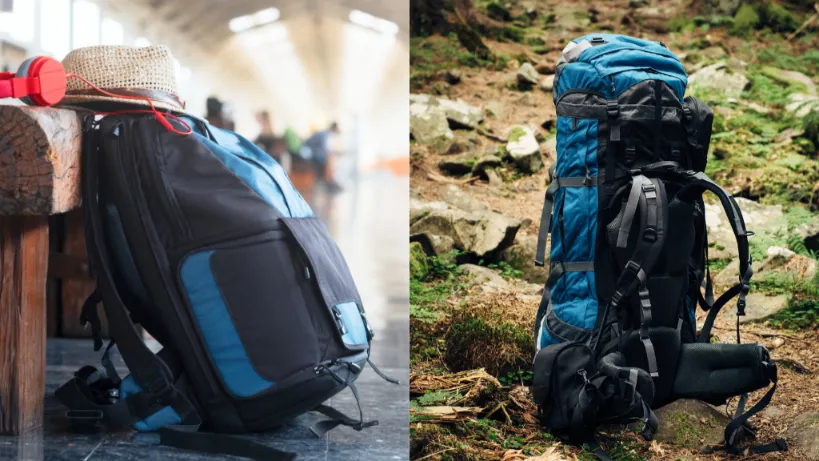There’s a common misconception that hiking and travel backpacks are pretty much the same thing.
Spoiler alert: they’re not. And understanding the differences between them can seriously impact your experience.
As someone who hits the trails more often than the airport, I’ve got a soft spot for hiking backpacks. Their tough-as-nails durability and knack for shrugging off bad weather works for me every time.
But that doesn’t mean I can’t appreciate the sleek organization and handy opening mechanisms that travel backpacks bring to the table. Who doesn’t love a backpack that makes grabbing your passport or camera so effortless?
In this article, we’ll break down the key differences that set them apart and compare their features side by side.
What Is the Difference Between a Hiking and a Travel Backpack?
The difference between a hiking and a travel backpack boils down to purpose and design.
Hiking backpacks focus on comfort and stability for long hikes. They’re built to distribute weight evenly, keeping you balanced on uneven terrain. These packs also typically have additional features such as waterproof materials and external straps for carrying gear like hiking poles.
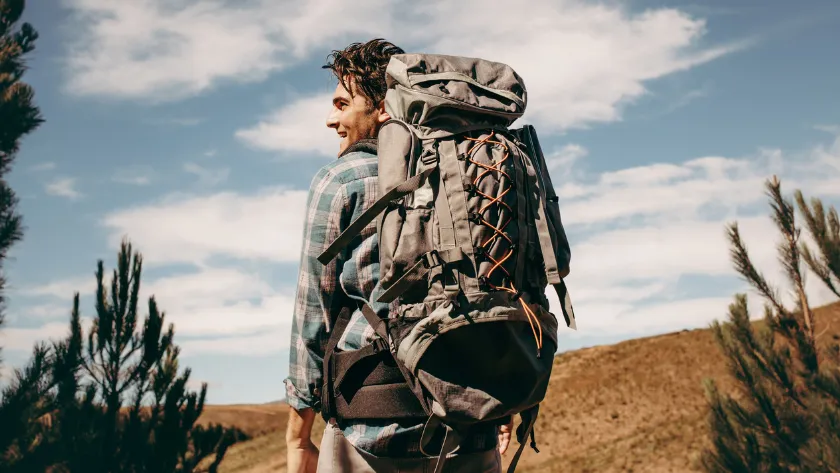
On the flip side, travel backpacks prioritize accessibility and mobility. They’re designed to make packing and unpacking easier, while also being able to fit in overhead compartments or under seats during flights.
These backpacks are often equipped with multiple pockets and compartments for organized storage, and may also have wheels for even more convenience.
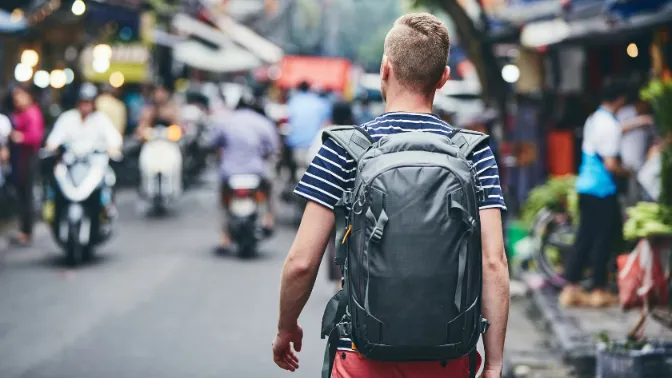
Having the main differences out of the way, let’s compare the most important features of hiking and travel backpacks to help you make the right choice for your next adventure.
Durability and Material
When you’re picking a backpack, whether it’s for scaling mountains or hopping from hostel to hostel, you want something that’s going to last.
Hiking backpacks and travel backpacks often use the same materials. But I noticed that hiking backpacks usually have thicker and more durable fabrics to withstand rough outdoor conditions. They also tend to have reinforced stitching and stronger zippers.
Travel backpacks, on the other hand, prioritize lightweight materials for easier mobility. They may not be as durable as hiking backpacks but are still built to withstand wear and tear from frequent travel.
Hiking Backpacks
For those of us who love to hit the trails, hiking backpacks are usually made from materials like nylon or polyester. They can handle being scraped against rocks, getting caught in branches, or enduring a sudden downpour.
Some hiking backpacks also have a special coating to make them water-resistant or even waterproof.
Travel Backpacks
Travel backpacks, on the other hand, live a slightly less rugged life but still need to be strong. They’re often made from similar materials as hiking backpacks, like nylon, but the focus is more on resisting wear and tear from constant handling, zipping, and unzipping – all that rough treatment they get when being shoved into overhead bins or the back of buses.
They also need to look good while doing it because we all want to travel in style.
How to Choose the Right Material
- Check the denier. This is a fancy word for the thickness of the fabric’s fibers. Higher numbers usually mean tougher material.
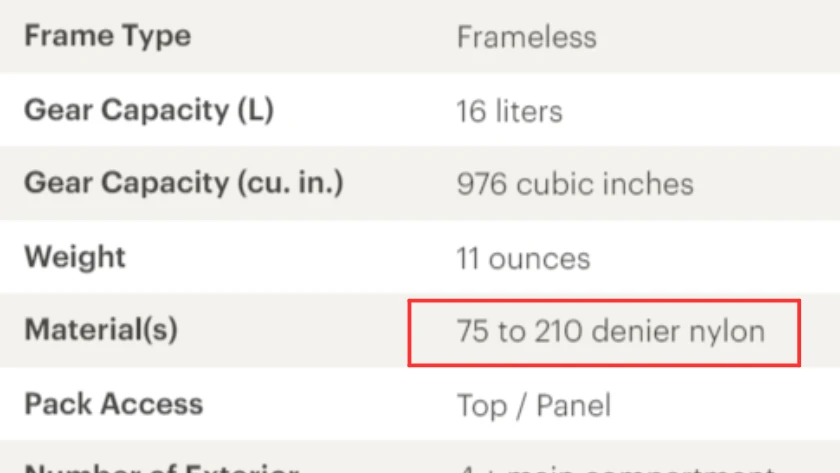
- Think about your journey. Are you going to be out in nature, facing the elements? Or are you city-hopping with occasional day hikes? Choose a material that fits your adventure.
- Water resistance. Whether you’re hiking or traveling, getting caught in the rain can happen. Look for backpacks with a water-resistant coating or covers.
Strap Design
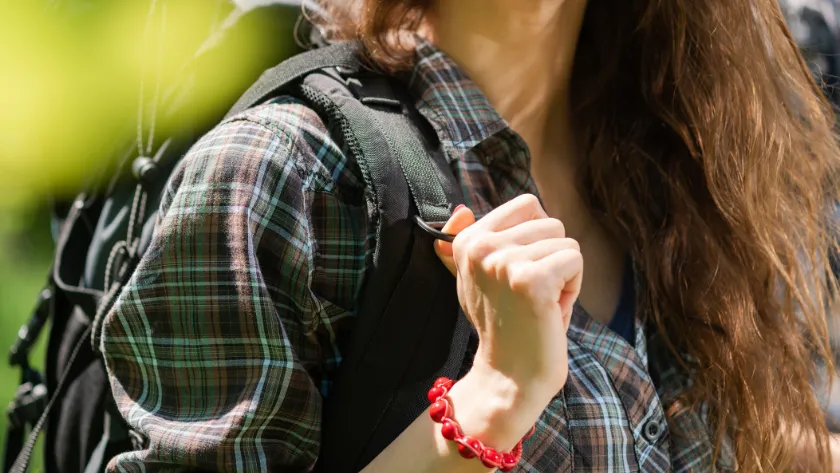
The design of the straps is another important feature. Hiking and travel backpacks often have different strap designs, each with their own benefits.
Hiking Backpack Straps
With hiking backpacks, the straps are designed with one goal in mind – to keep you going comfortably for miles and miles. They’re usually padded, to cushion your shoulders from the weight of your pack.
They also come with adjustable chest and waist straps. These help distribute the load evenly, so your back doesn’t bear all the brunt.
Ever noticed loops and mesh pockets on the straps of hiking backpacks? They’re not just for show. You can hook small gear onto them or stash your energy bars for quick access.
Travel Backpack Straps
Here, the focus shifts slightly. While comfort is still an important factor, flexibility and convenience take center stage.
The straps on travel backpacks are designed to make moving through crowded places much easier. They’re sleeker, avoiding the snagging and catching that can happen in tight spaces.
Many travel backpacks feature detachable straps. Let’s say you need to check your backpack in for a flight. Dangling straps can get caught and damaged on the conveyor belt. Being able to tuck them away neatly is really helpful.
Some travel backpacks even come with straps that can be reconfigured to turn the backpack into a shoulder bag or duffel.
Volume and Carrying Capacity
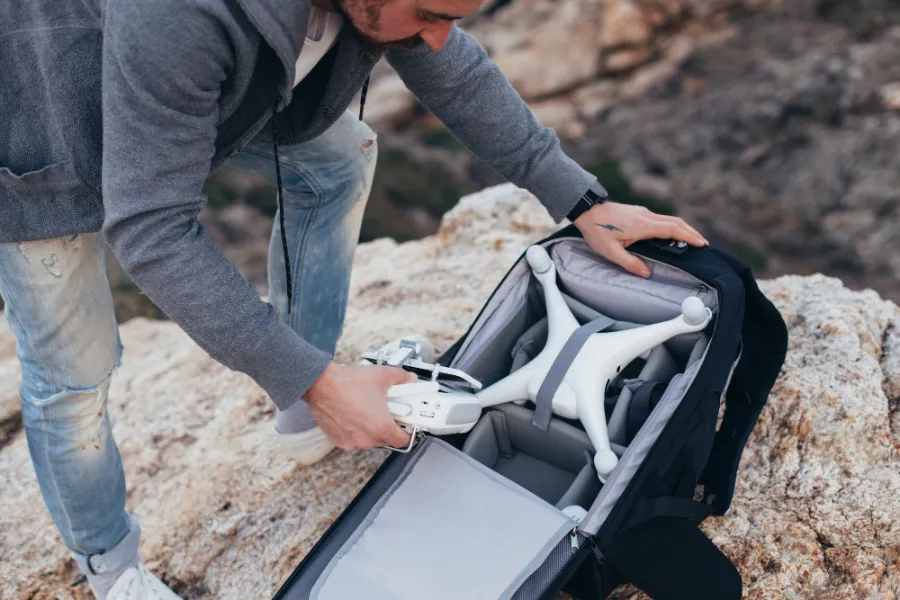
Hiking backpacks are designed with a focus on carrying heavy loads for extended periods of time. They typically have a larger volume to accommodate all the necessary gear for a long hike.
Travel backpacks are designed to be more compact and streamlined. They usually have a smaller volume and carrying capacity than hiking backpacks.
Hiking Backpacks
Hiking backpacks are the marathon runners of the backpack world. They can carry everything you could possibly need for a few days (or even weeks) in the wilderness.
Things such as sleeping bag, tent, food, water, and, of course, extra pairs of socks will all find their place in your hiking backpack.
They come in a range of sizes, but generally, their volume starts at about 40 liters and can go up to 70 liters or more.
Travel Backpacks
Travel backpacks will fit everything you need without checking luggage. Sizes usually range from about 25 liters to 40 liters, which is perfect for weekend trips or week-long escapes.
They often come with nifty compartments and pockets to keep your belongings organized because no one likes to rummage through their bag for a passport!
Organization

If you’ve ever been halfway up a mountain or rushing through an airport only to realize you can’t find your water bottle or passport, you know exactly why organization is a big deal.
The goal is to make your life easier, not to have you playing Tetris with your belongings.
Hiking Backpacks
I often treat hiking backpacks as my mobile base camp. The organization in these backpacks is pretty straightforward but incredibly smart.
Most hiking backpacks come with one main compartment that’s like the belly of the beast – it swallows up most of your gear. Then, you have smaller pockets and compartments for the things you need quick access to, like snacks, your map, or a first-aid kit.
What’s really cool about hiking backpacks is the external loops and straps. You can use them to attach your larger items like sleeping bags or trekking poles. This way, you keep the inside organized and save space for more essentials.
Travel Backpacks
Travel backpacks often open fully, like a suitcase, which is invaluable in some scenarios. You can see everything at a glance, no more digging through layers to find that one shirt.
They usually feature multiple compartments and pockets designed for clothes, electronics, and travel documents. Many have dedicated, easy-to-reach spots for your passport and boarding pass. Some even come with secret pockets for extra security. It’s like they’ve thought of everything.
Load Distribution
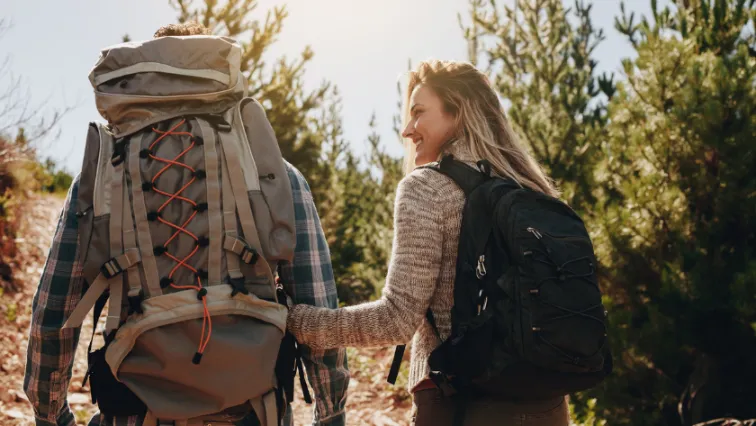
Another thing that’s absolutely vital for backpacks is distribution of weight. You’ll want to keep the load closer to your back, placing heavier items higher up and lighter ones lower down. This will prevent your bag from pulling you back and throwing you off balance.
What I noticed is that hip belts are game-changers for heavy backpacks. They transfer the weight of your shoulders onto the stronger muscles in your hips, sparing your back and keeping you balanced.
Hiking Backpacks
Hiking backpacks come with some pretty nifty features designed to spread the weight evenly across your body. This means less strain on any one spot, making that steep climb or long trek much more manageable.
What’s unique about these packs is the use of internal frames and hip belts. The frames keep the pack structured, so it doesn’t sag with weight.
Hip Belts take some of the load off your shoulders and distribute it to your hips, where you’re naturally stronger. With adjustable straps, you can fine-tune the fit to make sure the weight sits just right.
Travel Backpacks
While travel backpacks may not have the same level of load distribution technology, they often come with padded shoulder straps to reduce strain.
They also tend to have a more streamlined design, making it easier to maneuver through crowded airports or city streets.
Opening Mechanism
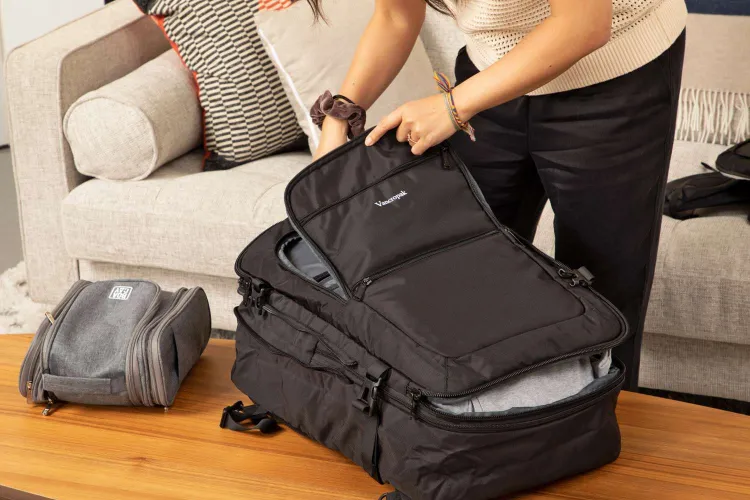
Does the opening mechanism make a difference? It definitely does! You don’t want to be that person holding everyone up or, worse, emptying their entire pack to find something. Your choice can either boost your travel experience or add unnecessary hassle.
Hiking Backpacks
The opening mechanism of hiking backpacks is a classic top loading – you simply drop your gear in from the top and pull it tight to secure everything in place.
Why top loading? Well, it’s all about simplicity and functionality in the wild. This design helps keep your gear compressed and ensures nothing falls out when you’re hopping over logs or scrambling up rocks. It also makes these backpacks super water-resistant.
While top loading is great for keeping everything snug, it can be a bit of a pain when you need something buried at the bottom. I had situations when I needed to unpack half my stuff to get to just one item.
Travel Backpacks
Unlike their hiking counterparts, travel backpacks often come with a front-opening mechanism. Think of them opening up like a book or a suitcase. This is extremely useful when you’re staying in hostels, navigating airports, or just trying to find your travel toothbrush without creating a mess.
With The front-opening style you can easily see and access everything inside without having to dig around.
Can You Use a Hiking Backpack for Travel?
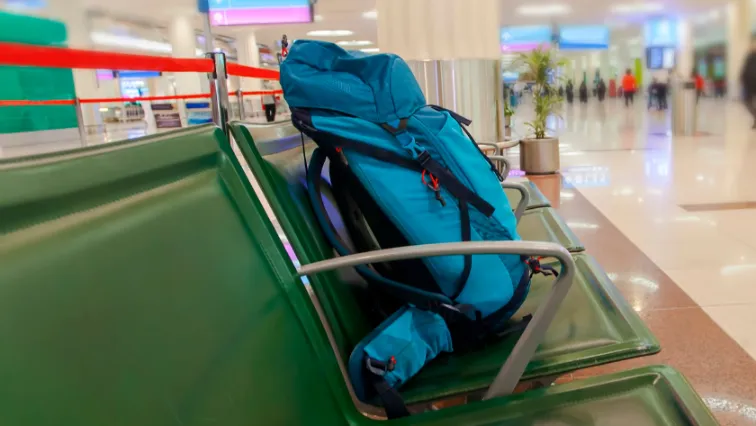
One question I hear often is whether you can use a hiking backpack for travel. The answer? Absolutely! In fact, many experienced travelers actually prefer using hiking backpacks because they are designed to be durable, comfortable and functional.
However, it’s not always the perfect fit for every situation.
Hiking backpacks have features like supportive hip belts, adjustable straps, and loads of space. Sounds ideal for travel, doesn’t it?
Well, sort of. The thing is, while they’re fantastic for outdoor adventures, they can be a bit cumbersome when you’re hopping on and off trains or navigating busy city streets.
They’re usually taller and bulkier, which can make them less than ideal for stowing in overhead compartments or under the seat in front of you.
Making It Work for Travel
If you’re set on using your hiking backpack for your next trip, there are ways to make it work.
- Pack Light: Just because you’ve got a ton of space doesn’t mean you need to use it all. Try to pack as light as possible to avoid the temptation of filling every nook and cranny.
- Keep It Organized: Hiking backpacks often have fewer compartments than travel backpacks. Use packing cubes or ziplock bags to keep things organized and easily accessible.
- Check the Size: Before you head to the airport, make sure your fully packed backpack meets the carry-on requirements. For most airlines, this is around 22 x 14 x 9 inches.
Can you use a hiking backpack for travel? Absolutely. Will it always be the perfect choice? Not necessarily. It depends on the type of a hiking backpack you have and the type of travel you’re doing.
Personally, I like to travel with small hiking backpacks with a volume of 10-30 liters (I love my Osprey Daylite). This way, I have enough space for my essentials and it’s still compact enough to easily carry around. Plus, they are usually more durable and water-resistant than traditional travel backpacks.
Conclusion
By now, I hope you’ve got a clear picture of the differences between hiking and travel backpacks. Each has its own set of strengths tailored to different adventures.
But it’s not always black and white. You can absolutely use hiking backpacks for travel and vice versa, as long as they tick off the most important boxes for your specific adventure.
The key takeaway? There’s no hard and fast rule that says you need a closet full of various backpacks to enjoy the great outdoors or globe-trotting.
Keep the tips and insights from this article in mind, and you’ll be well on your way to picking a backpack that won’t just carry your stuff but will enhance your experience.

Lukas Heller
Hey there! I’m Lukas, co-founder of BigfootHiking.com, alongside my adventurous wife Martha. Originally from Germany, I landed in Phoenix, Arizona, in 2015, where I’ve been scouting out new trails ever since (though they’re getting scarce!). By day, I’m a software developer, but my heart belongs to hiking – I’m always plotting our next trip. When I’m not coding or on the trails, you’ll find me hanging out with our Pit Bull, Zeus.

